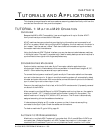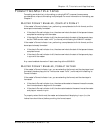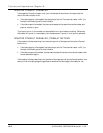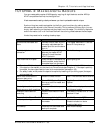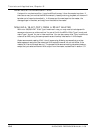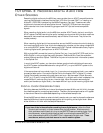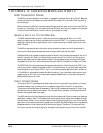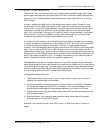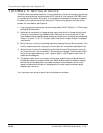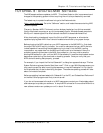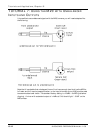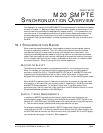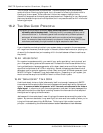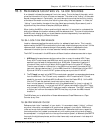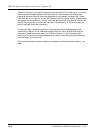
Chapter 15, Tutorials and Applications
ALESIS M20 REFERENCE MANUAL 1.06 15-9
POLARITY DIFFERENCES
The original ADAT inverted the polarity of the signal being recorded on tape, then flipped
polarity again before going to the output jacks. As a result, the output was the same polarity
as the input, so no phase problems were possible when using a single ADAT or a multiple
ADAT system.
However, neither the digital input nor the digital output was inverted. Therefore, if one
transfers the ADAT’s digital audio data to a DAT machine or hard disk recording system
(using the AI-1 or a similar digital interface), the audio output from the other device would
likely be out of phase with the ADAT, since it probably does not invert the analog signal
after its D/A converters. Although this in itself will usually not be a problem, it may cause
some confusion if multiple correlated audio signals are combined from multiple sources
since there is a possibility that signals could become out of phase.
To prevent this from occurring, with the M20 the polarity remains constant from the analog
to digital, and back to analog, domain. Like the original ADAT, the result from one machine,
or multiples of the same machine, is the same: The input to output phase is correct.
However, if two cloned tapes (copied digitally either with ADATs, M20s, or both) are played
back in sync on both an ADAT and an M20, the outputs of the two machines will be out of
phase relative to each other. Since it does not usually serve any practical purpose to play the
same signal from two different tapes with two different model machines simultaneously, this
should not present a problem for you. This design improvement is only mentioned here to
explain this possible situation should you happen to experience it.
Possible problem: Let’s say you had been using a multiple ADAT system and you recorded a
stereo signal across two machines (a stereo drum recording on tracks 8 and 9), where there is
a common element to each track (i.e. center signal). If you replace one of these machines with
an M20, the result would be that the track being played back on the M20 will be out of phase
from the track played on the ADAT, canceling the center signal.
Here are some possible solutions:
• Use a phase switch on your mixer (if your mixing board provides this) to invert the
phase of the problem track to compensate.
• Wire your patchbay to reverse the input and output polarity of the M20s in the system,
but use standard cables on the ADATs in the system. This is recommended only for
studios where master tapes will be exchanged between units or sent out of house.
• Digitally bounce one of the stereo tracks to the other ADAT so that both sides play back
from the same machine.
• Most importantly, plan recording sessions so that stereo tracks reside on the same
physical tape in a multiple ADAT system.
Note that if you overdub over an older ADAT tape in an M20, that track will now be in
phase.



